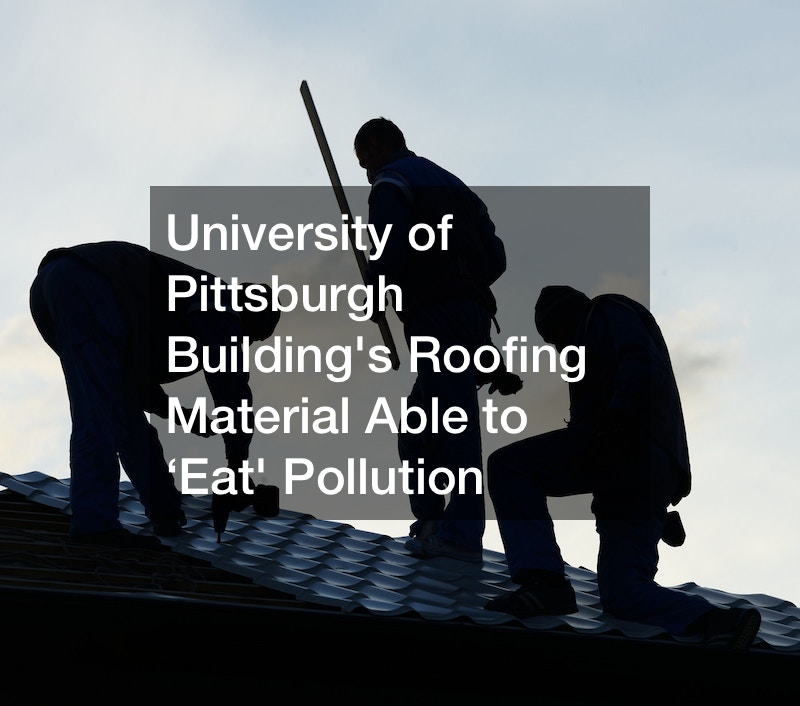University of Pittsburgh Building’s Roofing Material Able to ‘Eat’ Pollution
It’s important to pick the right material for your roof, given the fact that it’s one of your home’s biggest elements. To find out which material is the best for you, it’s a good idea to do research by searching online and talking to professionals.

While you’ll get different responses, the material that gets the best rap and is the most common one is bound to be the best. Remember that a roof may only be as good as the way in which it’s installed and use this fact to motivate you to find a professional to do the job.
Whether you want to get commercial shingles or you need metal roof repairs, don’t compromise on the quality. If you replace the entire roof and go for something like a Victorian metal roof or a California style roof, it’s important to do some reading on the pros and cons of these roofs or any other roof that you choose.
Once you have the roof of your dreams over your head, remember to service it in order to get the best service out of it. This may include using things like roofing liquidators and other things to fix issues that crop up.
The University of Pittsburgh has begun to experiment with a new roofing material that can allegedly “eat” pollution from the air.
According to a July 10 CBS Pittsburgh article, the roofing product, called eco-activ and manufactured by Siplast, will be coating the roof of Posvar Hall in time for the fall semester in a new effort toward sustainability at the university.
“It’s supposed to pull nitrogen oxide out of the air which comes from car emissions, coal plants and other fossil-burning fuels,” Dan Marcinko, Assistant Vice Chancellor and sustainability coordinator at the University of Pittsburgh, said.
Kirk Goodrum, head of research and development at Siplast, told CBS Pittsburgh that eco-activ rids the air of nitrogen pollutants by changing its physical state.
“[eco-activ] changes it from a gas to a solid, because in a gas form it can cause ground level ozone and can lead to respiratory issues,” Goodrum said.
And, according to Marcinko, the eco-activ roof on Posvar Hall will be able to remove as much as 200 vehicles’ worth of emissions from the air.
“We’re extremely interested in Siplast’s pioneering experiment with the new eco-active roofing product and its installation at Posvar Hall in Pittsburgh and waiting patiently for the pollution eating results,” says Tony, Roofing Manager at Husker Siding, Windows & Roofing. “Not only is Siplast’s effort positive in moving forward with eco-innovation, this new technology could open up a new era in the residential roofing market by ultimately providing the consumer in the near future with a choice of helping the one and only planet earth.”
Goodrum also remarked that eco-activ has thus far been used primarily on commercial buildings’ roofs — but there’s no reason why a private home can’t have a roof treated with eco-activ, either.
“We primarily deal in commercial roofing, but nothing would restrict it from being used on a residential home,” Goodrum said.










